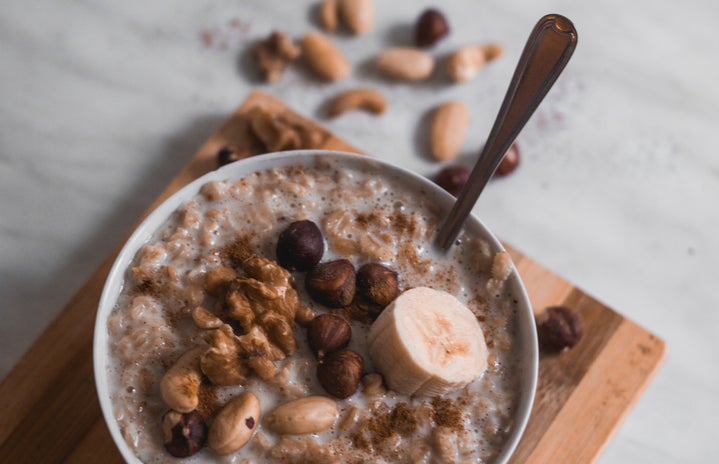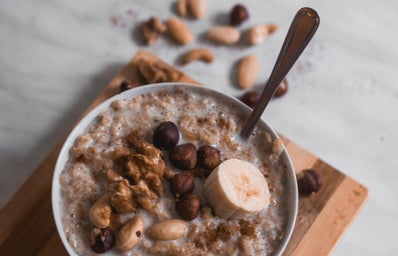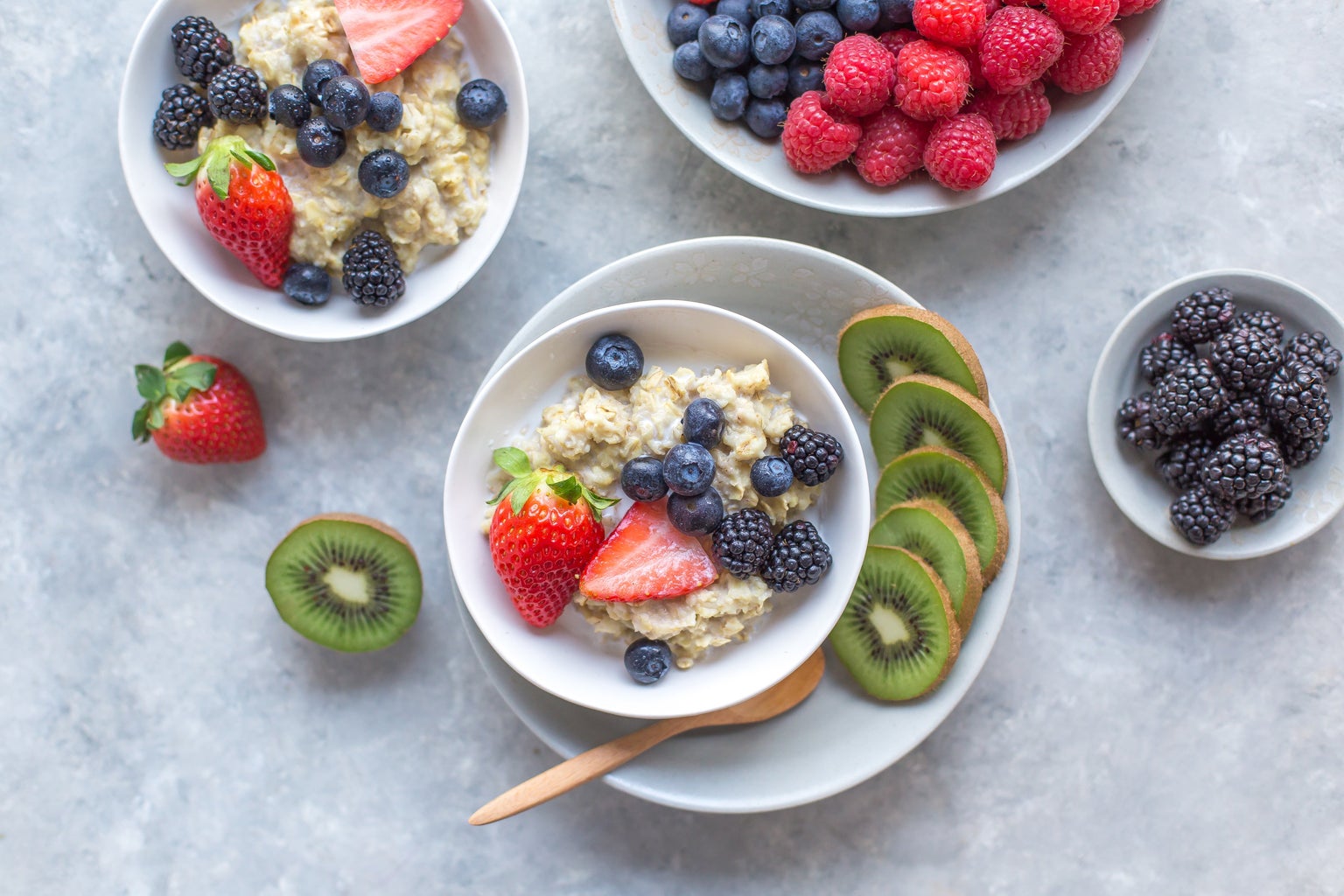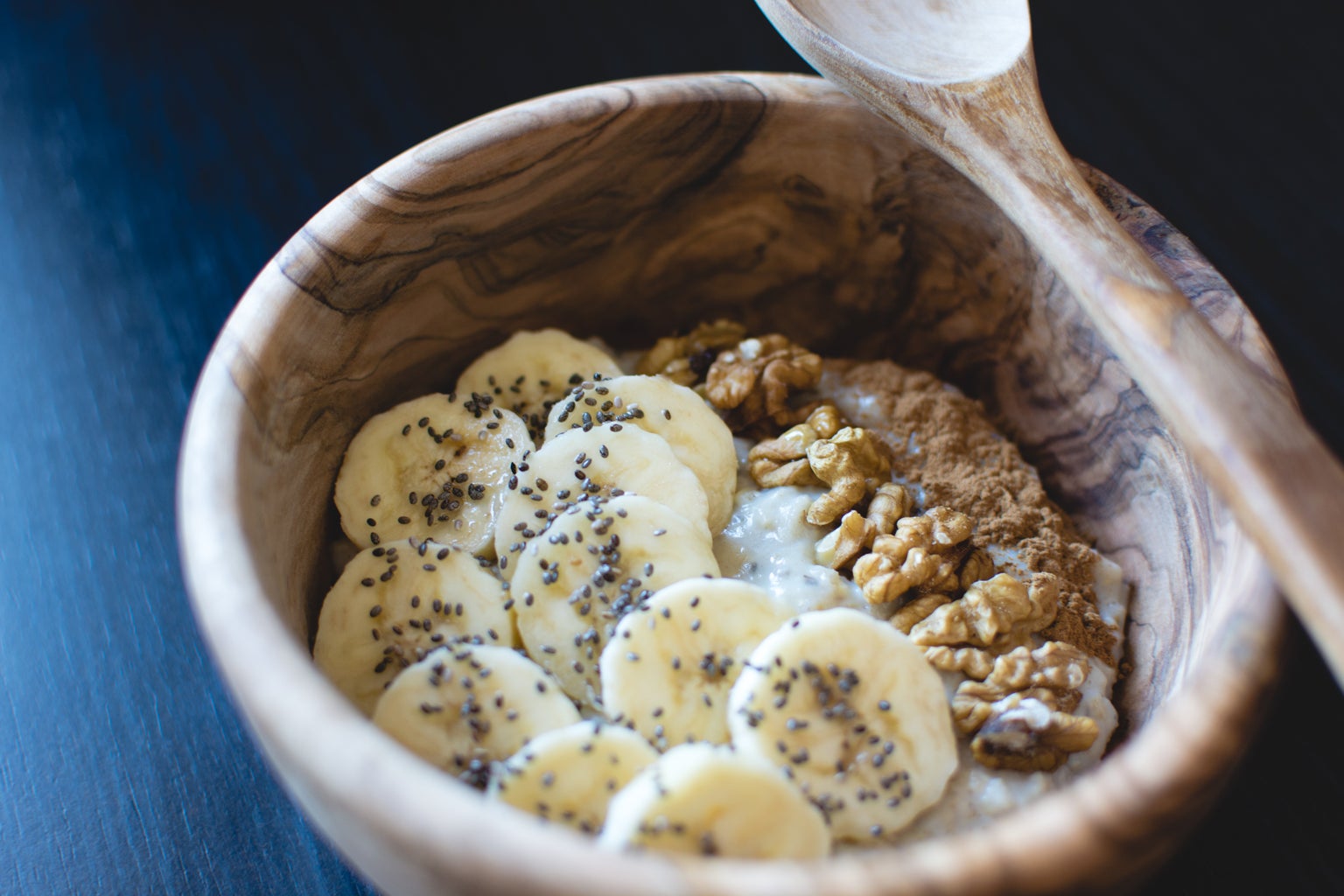Oatmeal is a hearty whole grain that is a nutritious and delicious breakfast option. According to the Harvard School of Public Health, oats and other whole grains can help reduce the risk of heart disease. Beta-glucan, the main soluble fiber in oats, can boost gut health and is especially good for controlling blood sugar and insulin levels, making it an ideal grain for people with diabetes to enjoy. The high fiber in oats can also promote digestive health. Along with oats’ multitude of health benefits, they are a widely available, inexpensive, pantry-friendly, and versatile whole grain, making them a prime option to include in your rotation of breakfasts. While some may not enjoy the initially bland taste and mushy texture of oatmeal, perhaps these tips can help transform this classic grain into a favorite breakfast or snack option!
First, there are many different types of oats to choose from and figuring out which one you prefer may take some experimentation. Those with a busy schedule may opt for instant oats while others may prefer regular oats. While there are few nutritional differences between oatmeal types, traditional oats such as rolled or steel-cut are typically more nutritious, including more protein. Instant oats often have added sugar and sodium as well as a higher glycemic index which leads to more rapid digestion according to Spoon University. In addition, instant oatmeal is typically individually packaged while traditional oats can be purchased in bulk, making them more sustainable for both the environment and your wallet. To avoid the downsides of instant oatmeal, overnight oats are a great option that is both environmentally sustainable and convenient.
To prepare a base of traditional oatmeal, in a small saucepan, combine your oats with water or milk, which should be around double the serving of oats. Bring the mixture to a boil and then reduce heat to low and stir occasionally until the oats fully absorb the liquid. While the oatmeal is cooking, add in any spices, seeds, or dried fruit to the mixture such as cinnamon, vanilla extract, chia seeds, flax seeds, and dried cranberries. To speed up this process, prepare the mixture the night before and cover it which allows most of the liquid to be absorbed overnight. In the morning, heat the oatmeal on medium heat and stir occasionally.
Once the base is complete, it is time to embrace your creativity and customize your breakfast. In every meal, it is essential to include some protein and fat to provide your body with energy and improve satiety. Yogurt is a great way to add texture, flavor, protein, and fat to oatmeal. Nuts, nut butter, and seeds are other sources of protein and fat that can jazz up your bowl of oats. For some crunch, top your oats with granola, whole nuts, or even a sprinkle of cereal. If you have a sweet tooth, add some honey, maple syrup, or dark chocolate. Lastly, a bowl of oatmeal would be incomplete without some fruit. Depending on your preference and what is available, frozen, dried, or fresh fruit all work well in oatmeal! In addition, do not be afraid to cook your fruit directly in your oatmeal as it helps to enhance the flavor of your oat base, making the dish even more delicious.
Oatmeal has evolved and is far from boring. With this guide, explore your pantry, experiment in your kitchen, and embrace this timeless, healthy, and tasty breakfast dish!





